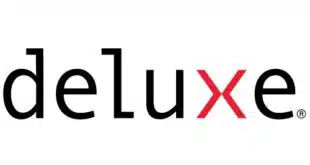Independent sales organizations and financial institutions that deploy ATMs have suspected for weeks that MasterCard Inc. planned to cut the interchange income allowed on withdrawal transactions on its Cirrus network, but now the total cost of the move is becoming clear. The hit to U.S. ISOs alone could amount to anywhere between $19.7 million and $25.6 million annually, according to estimates made by Tremont Capital Group, a Boston-based consulting firm hired by the ATM Industry Association, a trade group, to study the impact of MasterCard's moves, which become effective this month. Banks whose deployment businesses are bigger than their issuing operations will also sustain net reductions to income. Indeed, the hit to these banks could be even greater than that to ISOs, even allowing for banks' larger percentages of on-us transactions, estimates Sam M. Ditzion, chief executive of Tremont Capital. “At the end of the day, they're going to be equally if not more impacted” compared to ISOs, he tells Digital Transactions News. The impact on ISOs will be significant enough. Tremont Capital estimates MasterCard's changes will cut net interchange rates on U.S. cash withdrawals on domestic cards between 36% and 47%. (Unlike point-of-sale card interchange, ATM interchange flows from the card issuer to the machine deployer, or acquirer). “People are very worried,” says Ditzion, who says he's already heard from ATM ISOs, though ATMIA only released the results of his study on Friday. Some ISOs see MasterCard's move as a slap in the face to an industry that helped build out ATM networks to a point of near ubiquity. U.S. ISOs route some 17% of their total ATM transactions through Cirrus, according to Tremont Capital, for a total of 124.2 million transactions annually. “It is really, 'We appreciate your help, but we don't need you any more,” says Richard Brennes, president of The Brennes-Jones Group Inc., a Dallas-based ISO, in an e-mail message. One response ISOs could mount to the interchange reduction is to ask merchants to increase convenience fees on ATM transactions, then charge the merchants a “like amount,” Brennes says. But processing contracts may not allow such a move, he says, and it could also invite regulatory scrutiny. Like many in the business, Brennes expects MasterCard rival Visa Inc. to follow suit, a move that would cut ISOs' income even more. Contacted by Digital Transactions News, a Visa spokesman says in an email message, “Interchange rates are constantly monitored and adjusted in response to dynamic and highly competitive market forces. We don't have any announcements to make now.” For its part, MasterCard says its cuts in ATM rates are necessary. “MasterCard reviews U.S. interchange rate programs and adjusts them from time to time to encourage widespread issuance and acceptance of MasterCard card products,” a spokesman says in an e-mail message. “The [new] structure is competitive with existing interchange rate structures at competing networks.” Under pricing that was in effect until April 1, MasterCard allowed a gross interchange fee of 50 cents, from which it subtracted a nickel ATM support fee and, in some cases, a so-called acquirer brand-value fee of 0.095%. That left ATM acquirers with interchange income of 45 cents on most transactions. Under a new arrangement that took effect April 1, MasterCard split its rates into three tiers, as determined by issuer volume. To go with this move, on April 16, the ATM support fee rises to 18 cents. “A huge increase,” notes Ditzion. That means that in the lowest-volume tier, gross interchange remains 50 cents per transaction, but the net income to acquirers drops to 32 cents after allowing for the support fee. In the middle tier, gross interchange drops to 45 cents, leaving 27 cents for acquirers. And in the top-volume tier, acquirers collect 17 cents on gross interchange of 35 cents. Also effective on Friday, the brand fee is being eliminated. Tremont Capital's estimates of the impact of MasterCard's new rates on ISOs stemmed from data it gathered from 25 ISOs accounting for 137,000 ATMs around the U.S. The company says its data represent 67% of ATM ISOs in the U.S. and 34% of the country's installed base of ATMs.
Check Also
77% Tire of Drive-Thru Wait and other Digital Transactions News briefs from 5/15/25
SoundHound AI Inc. said of the 94% of U.S. consumers who use voice assistants while driving …




